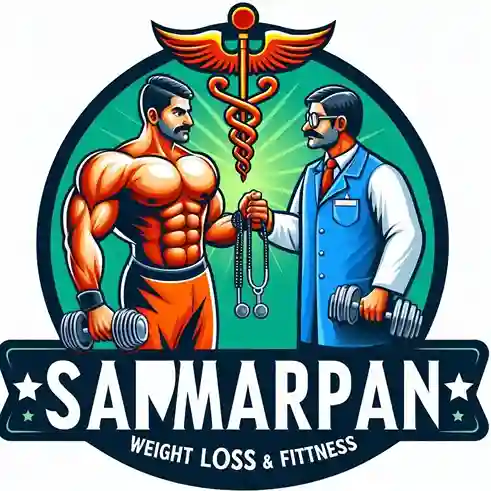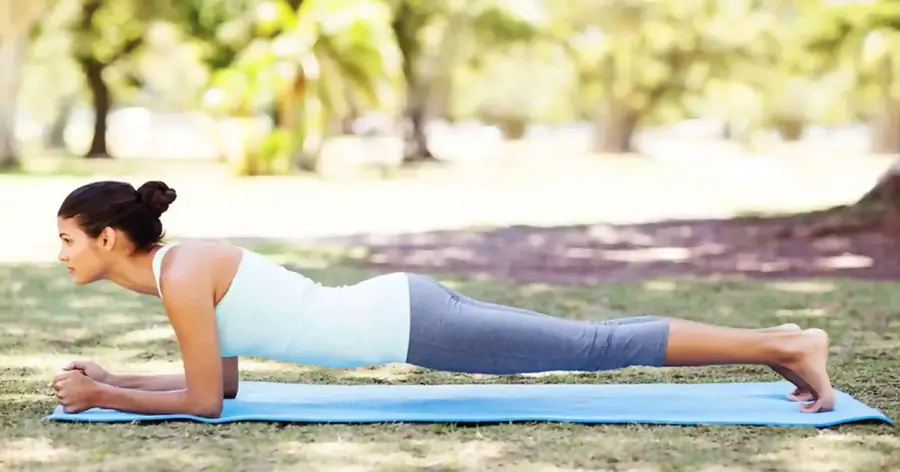Posture Correction & Core Strengthening Exercises
Having a solid core is a great advantage. To begin with, a strong and stable core will improve your posture and balance and ease your back pain. Your core muscles are essential for movement and directly impact your posture, movement, and mobility. This article lists some of the greatest core workouts for strengthening your core.
Every time you stand up, move, lift something, or even breathe, your midsection is working. Additionally, your core strength ultimately determines your capacity to balance, steady, and manage your body weight during each workout session.
Together with the surrounding muscles like your glutes, erector spine, and abdominals, your spine, and pelvic girdle serve as the control center of your core, contracting and stabilizing you. You don’t need to concentrate on just one area, such as performing sit-ups, to challenge these specific muscles because several combinations of these muscles are directly involved in a wide variety of exercises.
If anything, combining complete muscle groups at once is one of the best and most effective workouts. Additionally, it will assist you in maintaining your balance, which is essential while trying to avoid injuries and enhance performance.
What is Posture?
The way your body is positioned whether standing or sitting is known as your posture. It explains the alignment of your hips, shoulders, and head with your spine.
Like beautiful bodies, there are no “perfect” postures. The term “good posture” describes having a neutral spine, in which your ligaments, joints, and muscle groups are positioned to minimize strain on them, retain your body’s flexibility, lessen tiredness, and aid in balance.
An imbalance in your posture might result in:
Back, head, or neck pain due to a strained muscle or joint
potential harm sustained when working, exercising, or engaging in other activities
It’s typical to have poor or misaligned posture. It may have an impact on your overall well-being, self-esteem, and looks. Fortunately, there are exercises and, if needed, posture aids that can help you improve your posture.
Here are four typical forms of bad posture and how to compensate for or fix them.
Types of posture
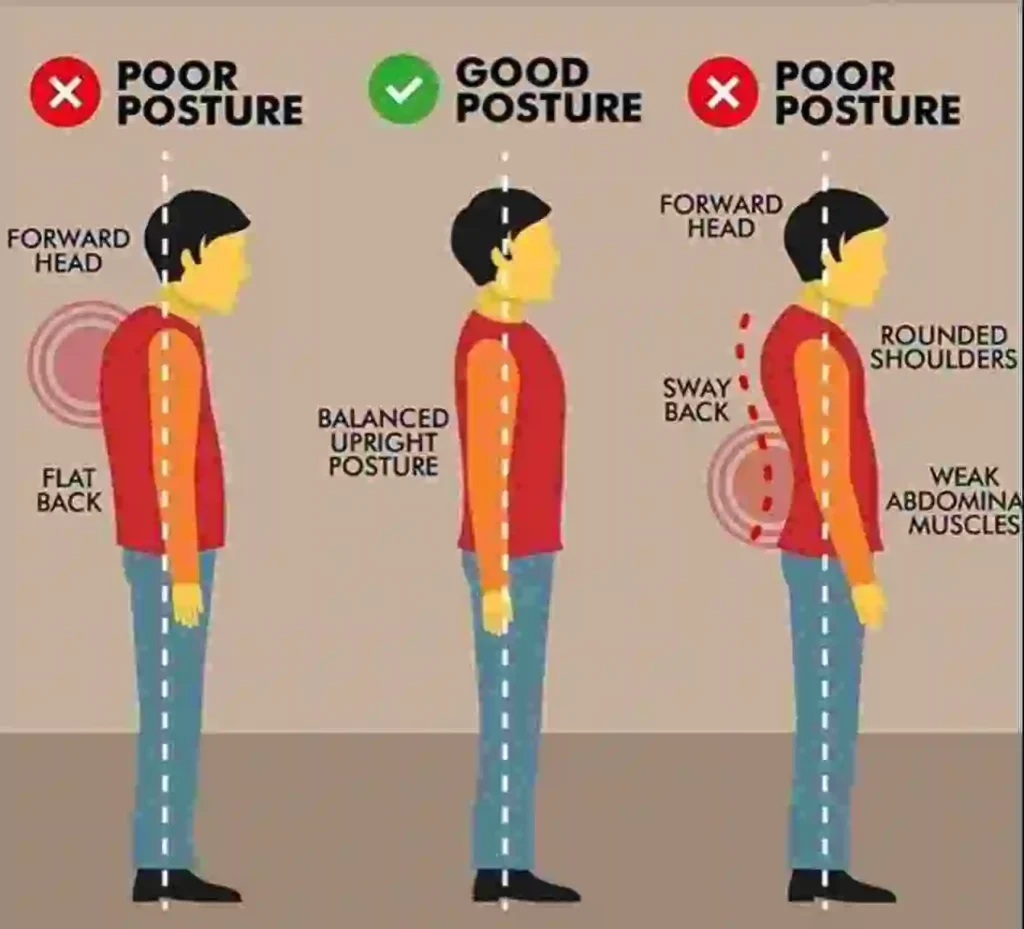
Without realizing it, it’s simple to form a bad posture habit. Walking with a heavy backpack, slouching in a chair, or looking over a small screen might take up a lot of your time. At work, you might also employ repetitive gestures.
All of these things can eventually result in poor posture.
Low posture can also result from being overweight, pregnant, wearing high heels, or wearing shoes of low quality.
Your posture may be impacted if you are born with one leg shorter than the other or scoliosis, which is an abnormally curved spine.
Common posture problems
These are four typical forms of bad posture.
Forward head
Positioning your head so that your ears are in front of your body’s vertical midline is known as forward head posture. Your shoulders and ears should be in line with your vertical midline if your body is in alignment.
Forward head posture is sometimes known as tech neck, text neck, or nerd neck. It frequently results from stooping over a computer, cell phone, or, if you drive frequently, your steering wheel.
As you age, you may also see a decrease in upper-body muscle strength.
Kyphosis
The term “kyphosis” describes an excessive curvature of the thoracic spine, or upper back, when the shoulders are rounded forward. Another name for it is hunchback.
As your spinal bones deteriorate with age, osteoporosis (bone weakening) may result in rounded shoulders. It is commonly observed in older ladies. Degeneration of your vertebrae or spinal disks is another age-related factor.
Infections, polio, Scheuermann’s illness, chemotherapy, and radiation therapy for cancer can all cause kyphosis in younger people.
Swayback
When your hips and pelvis lean forward, in front of your body’s midline, you have swayback, also known as lordosis or hyperlordosis.
Your lower back has an accentuated inward curve while you are in this position. When you stand up, your behind and stomach protrude, giving the impression that you are leaning back.
Sitting too much might cause your back muscles to stiffen, leading to swayback. Long-term sitting can also damage your glutes and abdominal muscles. Your back’s stabilizing core muscles weaken in both situations.
Obesity, trauma, neuromuscular disorders, and anomalies of the spine and vertebrae are possible additional causes.
Flatback
When your lower spine loses some of its natural curvature, it’s known as flatback. You stoop forward and your lower back appears straight.
It may be inherited, the consequence of certain back surgeries, or degenerative disorders of the spine, such as disc degeneration, vertebral compression, and ankylosing spondylitis (inflammatory arthritis).
Standing for extended periods can be painful if you have a flat back.
What is the “core” and why is core strength so important?
A collection of muscles known as the core stabilizes and regulates the spine and pelvis, which in turn affects the legs and upper body. The intricacies of maintaining the body in optimal postures to relieve joint stress and facilitate mobility are more important than strength. This keeps the normal person from experiencing pain when getting on and off the floor to play with their kids or grandkids, get out of a chair, sit comfortably at a desk, or vacuum and rake. It encourages more effective mobility in athletes, reducing the risk of injury and enhancing performance.
In addition to enhancing resilience and making acute injury rehabilitation easier, having a strong or stable core can frequently assist prevent overuse problems. The pelvic floor muscles are also part of the core, and keeping the core stable can aid in the treatment and prevention of some forms of incontinence.
Which muscles make up the core?
The muscles that make up your core are not only your abs. The box-shaped core includes the muscles on the front side of your lower trunk, or core.
Muscle groups of the core
Abdominals: The muscle most people think of when they think of a six-pack is the rectus abdominis. It aids with internal organ stabilization. The transversus abdominis, another crucial abdominal muscle involved in movement and spine stabilization, is also referred to as the corset muscle due to its horizontal orientation.
Obliques: The internal and external obliques, which run down the sides of the body, aid with rotation and spinal protection.
Back: The lower back contains the deep abdominal muscle known as the quadratus lumborum. It stretches from the apex of the pelvis to the lowest rib. It is frequently linked to problems with posture, movement, and back pain.
Organs like the urethra, bladder, intestines, rectum, uterus, cervix, and vagina are located on the pelvic floor. Additionally, it comprises connective tissues like the abductors, hip flexors, and hamstrings. The pelvic floor muscles and tissues work together to support hip stability, bowel motions, urination, and sexual health, among other functions.
Spine: Although the multifidus and erector spinae are formally back muscles, the spine connects them to fundamental movement.
Glutes: Your backside’s glutes are a collection of three muscles that affect hip extension and rotation.
Diaphragm: During inhalation and expiration, the diaphragm contracts and flattens, making it a muscle commonly linked to breathing. The diaphragm, which is situated at the base of the chest, contains apertures that aid in both blood flow to the heart and digestion.
Advantages of having a solid core
Due to the lack of clarity surrounding the definition of the core, many people believe that core strengthening consists solely of ab exercises.
It is equivalent to some ab exercise, but it also entails working your back, hips, and core muscles.
- Lower back stabilization
- Increasing adaptability
- Assisting with stability
- Encouragement of improved posture
- Encouragement of improved form in exercise
- Increasing steadiness
- Facilitating daily mobility
- Reducing or preventing pain
- Assisting with strength training activities
- Facilitating the process of running
- Assisting in the decrease of lower-body injuries
Strong core vs. weak core
With concentrated attention to breathing and posture control, those with strong cores may maintain specific core postures for longer.
Poor posture and persistent back discomfort are linked to a weak core. Maintaining core exercises for extended periods may be difficult for you.
To determine which muscles need work and how strong your core is, you might attempt a basic plank test.
What is the impact of your core on your posture?
When it comes to body mobility, your core muscles are crucial. Your mobility, posture, and movement are all directly impacted by them. It’s crucial to remember that your core is constantly active. It’s critical to combine exercise with a proper stretch and mobility regimen because bad posture directly contributes to weak and tense muscles.
How might having a strong core help me with my posture?
Your spine, back, head, and neck all depend on the strength of your core, which serves as your body’s anchor. For this reason, the health of your back depends on the position of your spine. Strengthening your cores can assist stop other muscles from having to work as hard to maintain your spine because they sit directly in front of it.
Regularly strengthening your core muscles will reduce the amount of support your back muscles provide for your spine. Core exercises are beneficial for a toned stomach, but they also have the added benefit of improving posture, so both parties benefit.
Core exercises to improve posture
Now that you know how important a strong core is for proper posture, the key question is: how do you strengthen it? The answer is easier than you would imagine; you don’t need to spend a bunch on a gym membership or spend endless hours performing crunches.
Your posture will improve and your core will get stronger if you set aside some time each day for stretches and core exercises. Your abdominal muscles, especially the transverse abdominals, should be the focus of the exercises if you want a strong core. Here are some efficient methods for strengthening your core and enhancing your posture.
Swimming
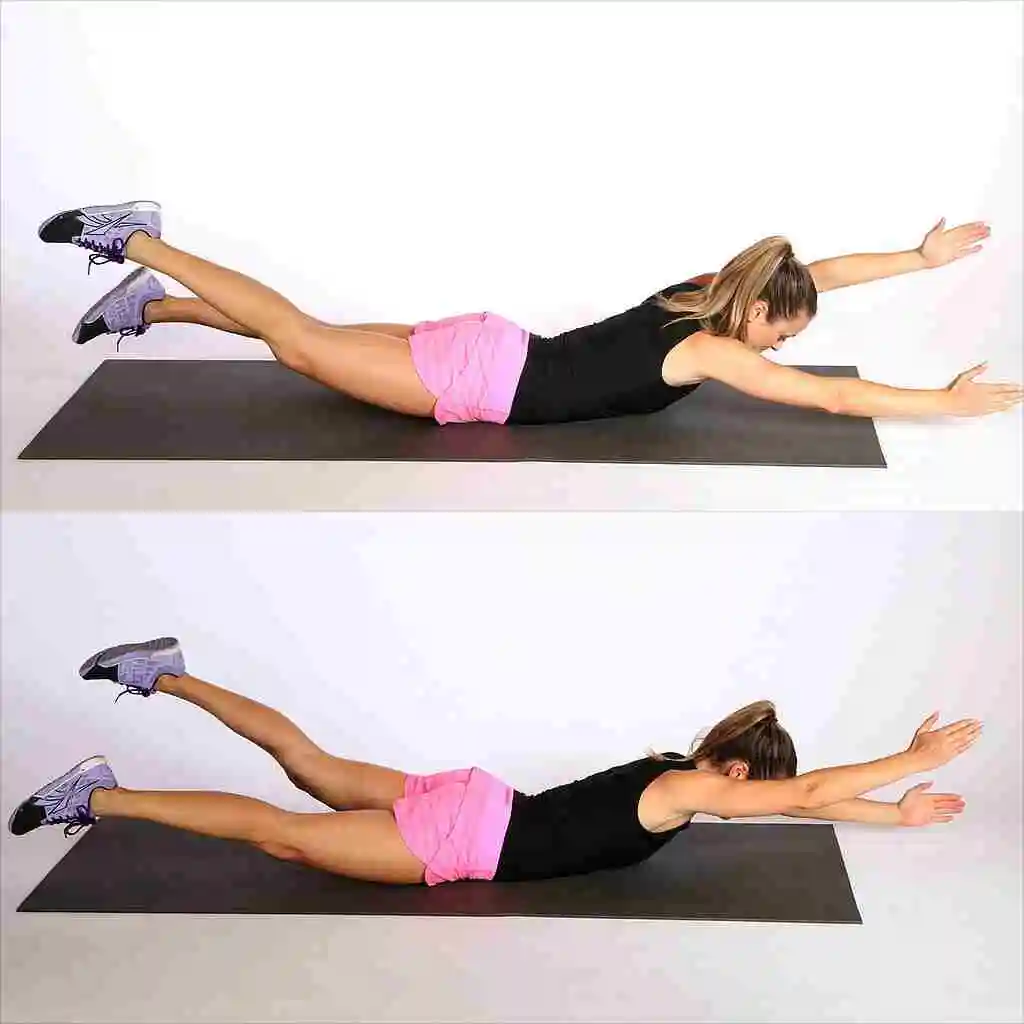
This Pilates exercise improves your posture and range of motion by focusing on your back, shoulders, and glutes.
Instructions for the exercise:
To perform this exercise efficiently, lie face down on the floor with your arms and legs spread out in an “X” shape. Raise your arms, thighs, and chest gently off the ground. It’s crucial that your neckline lines up with your spine and that your eyes focus downward. Now, lift both your right leg and left arm slightly, then quickly switch sides. Do 20 repeats as fast as you can; that’s one rep. While your arms and legs are flying, make sure your torso remains stable.
The Bow Pose
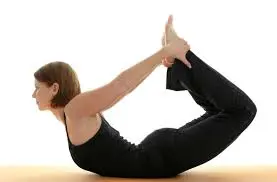
Your front muscles tend to become tense from sitting at your desk all day, so this easy stretch exercise will help loosen them up.
Instructions for the exercise:
Place yourself on a mat, knees bent, hip-width apart. Now grab your ankles by reaching your arms back. Raise your thighs and chest as high off the ground as you can with little pressure. Make sure your heels and head line up.
Balancing Side Plank Pose
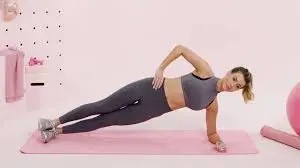
It is intended to strengthen your inner thighs and obliques. This specific plank variant should help you achieve this goal.
Instructions for the exercise:
To begin, place your right leg straight out on the floor with the bottom of your foot flat, bend your left knee, and stretch your left hand under your shoulder. This is a modified side plank. Maintaining a stacked hip position is crucial. Lift your leg off the floor and slide your left foot toward your right knee. Cross your left knee slightly so that it is over your body’s midline. At this point, pull your abs in tight into your spine. Repeat on the opposite side after 10 seconds of holding this position.
The Seated Hurdler Pose
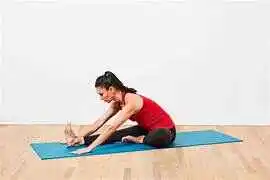
This position can be performed just after the balanced side plank stance and is intended to open your hips and hamstrings.
Instructions for the exercise:
Start this exercise by sitting down. The underside of your right foot should be pushed on your left thigh as you begin by extending your left leg with your right knee bent and open on the side. Now, without necessarily sacrificing comfort, bring your right foot as near to your body as you can. Repeat on the opposite side after 30 seconds of holding this position.
The Seated Hover
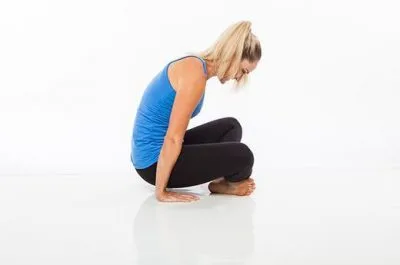
Although this ab exercise doesn’t seem like much, it’s a terrific way to strengthen your core.
Instructions for the exercise:
Sit in a lotus position with your legs crossed, if at all feasible. Make sure your hands are firmly against the floor and outside of your hips. Now circle your back and tilt your pelvis up. To raise your hips off the mat or floor, softly press your arms into the floor while scooping your abs deep towards your spine. Hover in this position for a maximum of 30 seconds. Cross the opposing leg in front of you for the previous set. Practice the tilt and scoop if your hips don’t lift off the ground.
The Hip Opener
Your hips and back will feel more relaxed after doing this exercise. This exercise can be done following the seated hover stance.
Instructions for the exercise:
Simply reach your arms out in front of your body on the ground, fold your body over your legs, and lower your hips to the floor from the hover position to start stretching your hips.
The Kneeling Hinge
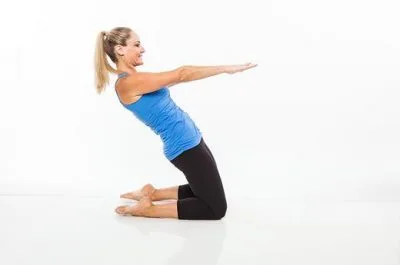
Engage your abs with a Matrix-inspired exercise with this workout.
Instructions for the exercise:
Bend your knees until your legs are hip-width apart, point your toes behind you, and extend your arms in front of your chest, palms down. Maintain a straight line from your legs to your head while bracing your abs. Return to the beginning position after attempting to hinge back as much as you can. Do no more than ten repetitions. For further padding, feel free to fold a mat or towel underneath your knees.
The Camel Pose
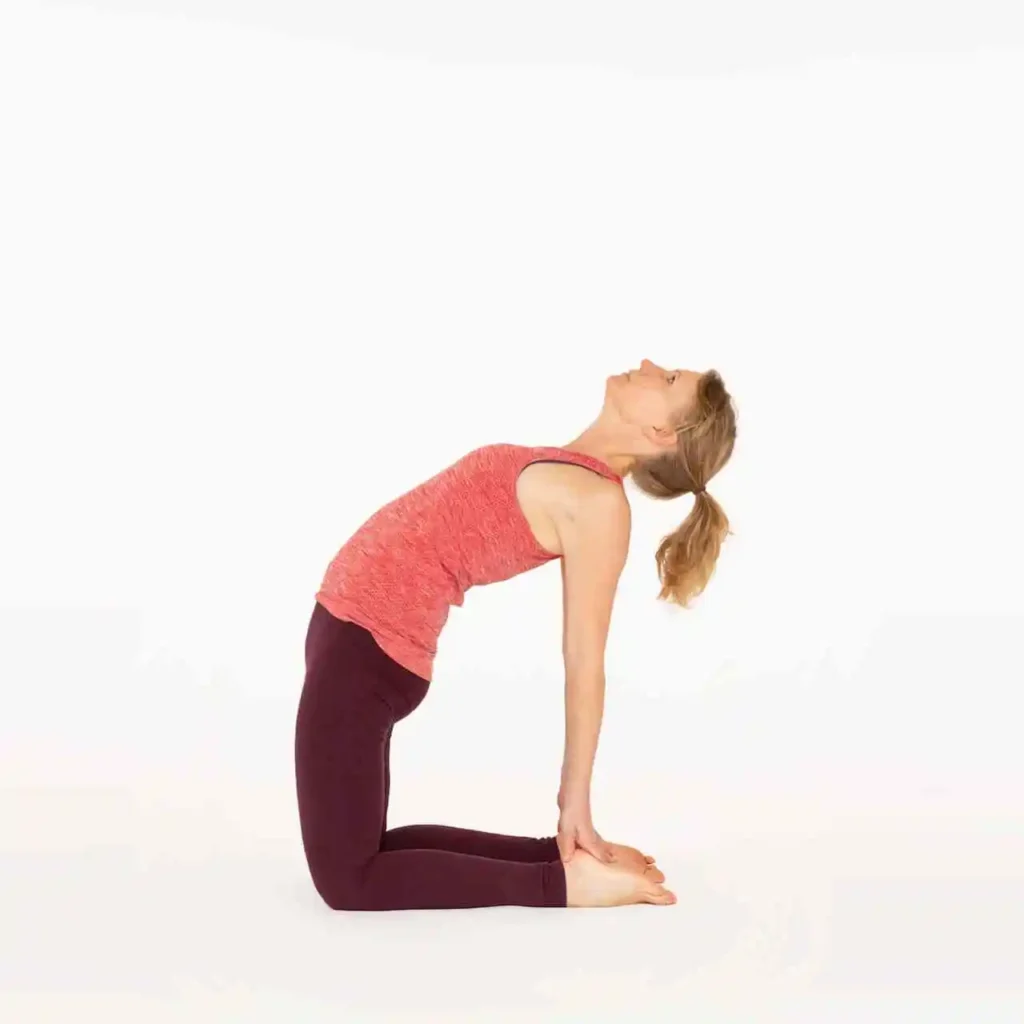
In a yoga stance, this practice helps to stretch your back, chest, and thighs.
Instructions for the exercise:
Start by assuming a kneeling hinge stance. Now, push your hips forward while arching your back and extending your hands back to your heels. Make sure your toes are tucked under to put your heels closer to your hands to make this action easier. Maintain this posture for a maximum of 30 seconds.
The Bird Dog
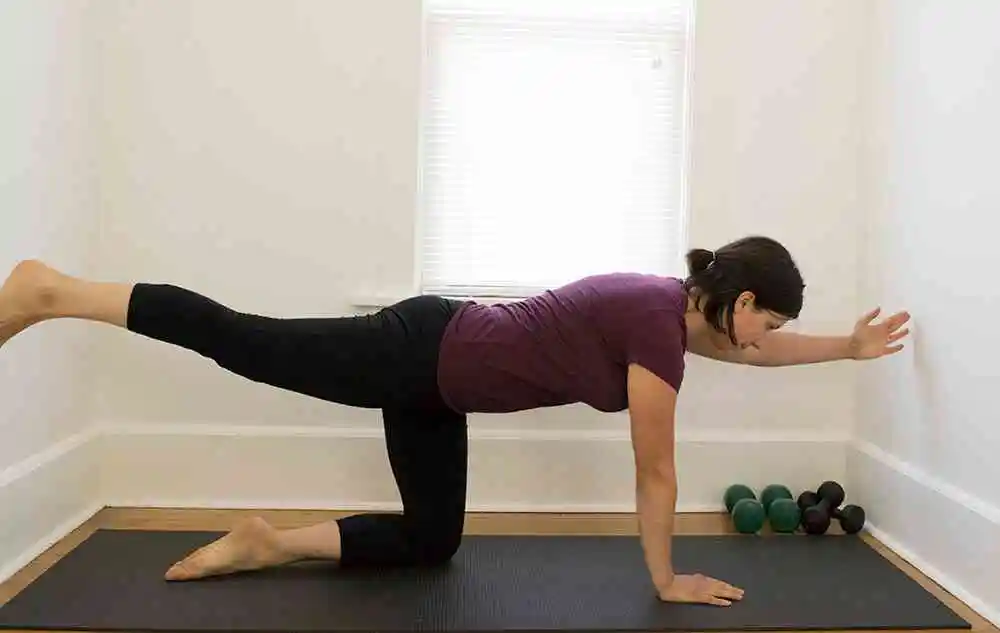
This is a very difficult workout that seems more difficult than it is. It’s also a good way to strengthen your core.
Instructions for the exercise:
Begin by getting down on all fours. With your left leg extended so that it is behind your hip, brace your abs and reach your right arm across to your right ear. Make sure your leg and arm are parallel to your torso. For one to five seconds, hold this position. Avoid changing your body, lower your arm and leg, and swap sides for a more effective routine. Throughout the entire workout, try to visualize yourself balancing a cup of tea on your lower back. For best results, perform 20 alternate repetitions.
The Balancing Quad Stretch
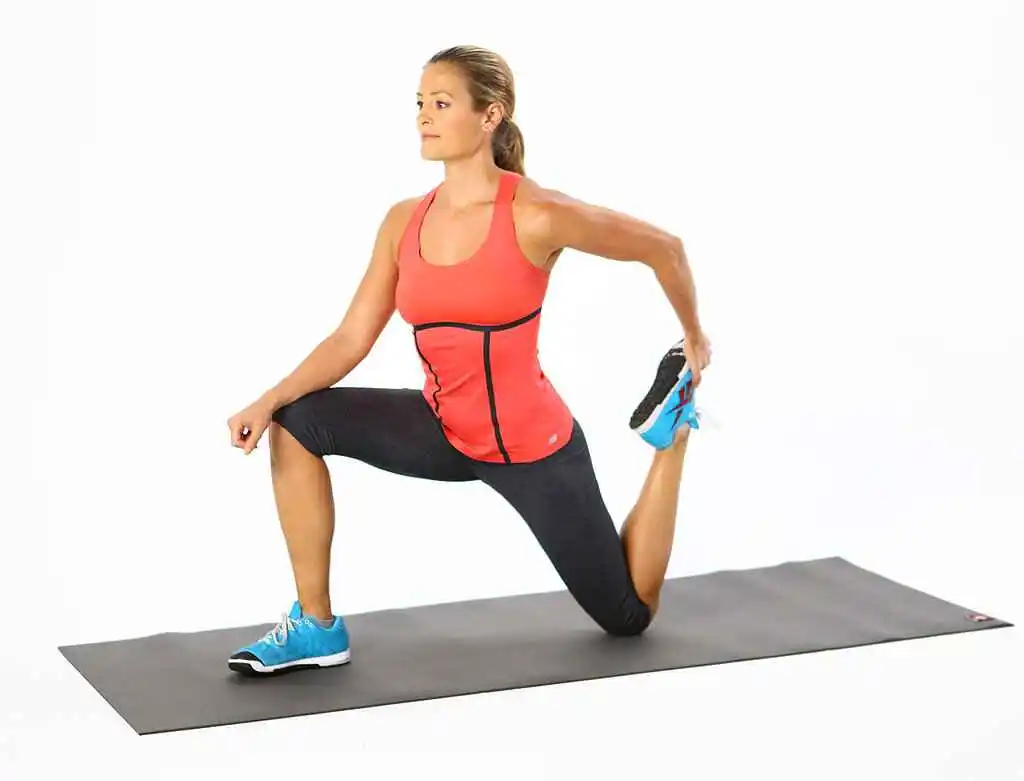
This balancing stretch will help you extend your quadriceps, chest, and hip flexors while maintaining your core muscles for this workout.
Instructions for the exercise:
Extend your opposing arm and leg while on all fours. Try to grasp your left foot with your other hand while bending your knee. Raise your leg as high as you can while bringing your foot into your body. After 30 seconds of holding this position, switch to the other side.
The Knee Pull Plank
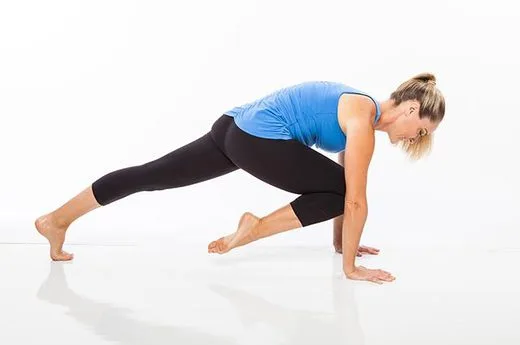
This form of the plank works your entire body while targeting your abs.
Instructions for the exercise:
Begin by assuming a complete plank position. With your arms straight out under your shoulders, bring your feet together. To bring your abs closer to your spine and allow your back to round a little, bend your right knee inward toward your chest. Then, ten times, pulse your knee near your chest. As you pull your knee in, make sure your abs are getting tighter. Apply the same principle to the other side.
The Pigeon Pose
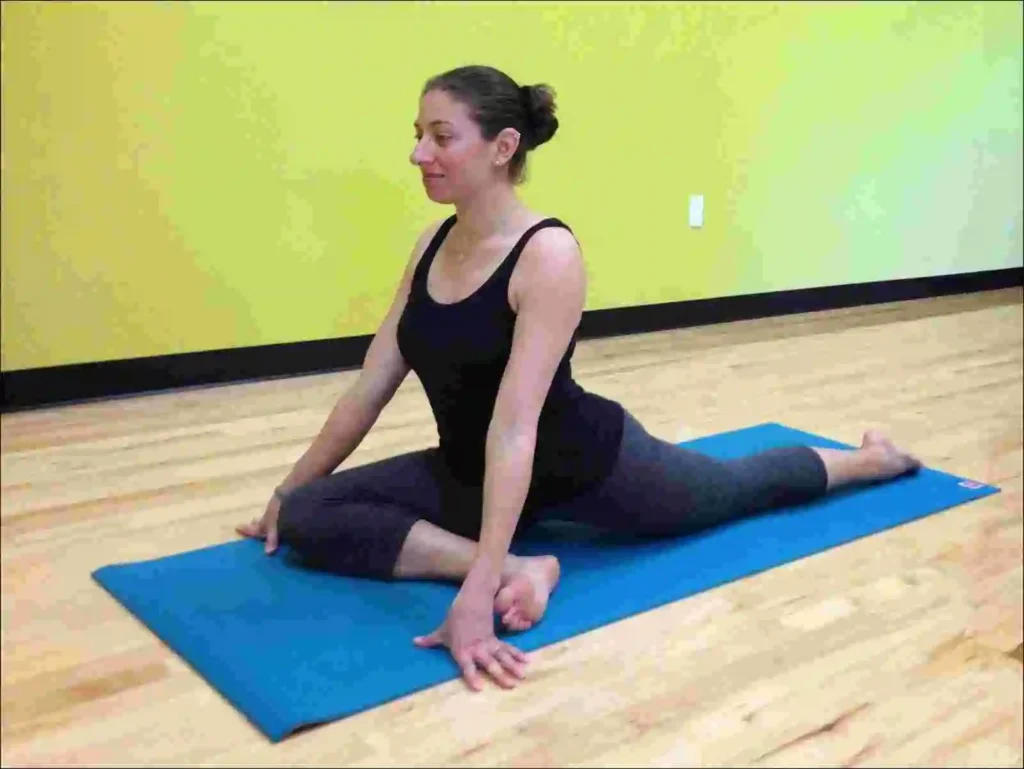
Both stiff hips and inner thighs can be released with this exercise.
Instructions for the exercise:
This is a progression from knee pulls to planks. To begin, lift your heel forward and turn your knee out to the side as you lower your raised leg to the floor. Using the top of the foot that is on the ground, pin-point the foot that is behind you as you move the leg down to the floor. With your head resting on your hands, bend your elbows and lower the top portion of your body towards the floor. Is it difficult? To lessen the tension, make sure your hands are on the floor while your upper body is raised. After 30 seconds of holding this position, switch to the other side.
Panther Shoulder Tap
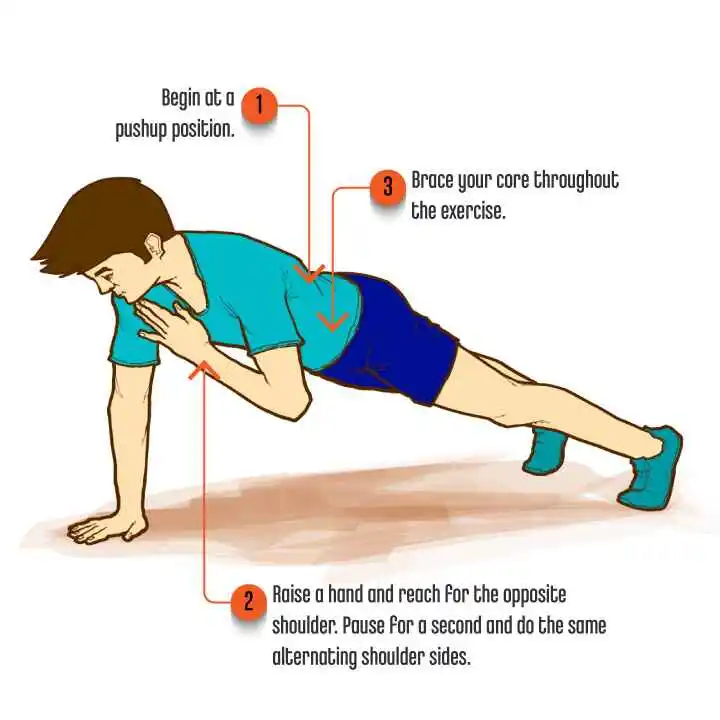
This is a fantastic core-focused bodyweight exercise. It’s exciting, difficult, and dynamic. Your midsection will be energized in no time.
Instructions for the exercise:
Start on your hands and knees. As with a plank, engage your core by keeping your butt down and your back flat. Now raise your knees one to three inches off the ground. Keep your neck in a comfortable position by focusing your eyes on the floor a few inches forward. Now, utilizing your core strength, tap your right hand on your left shoulder and then your left on your right shoulder.
The Butterfly sit-up
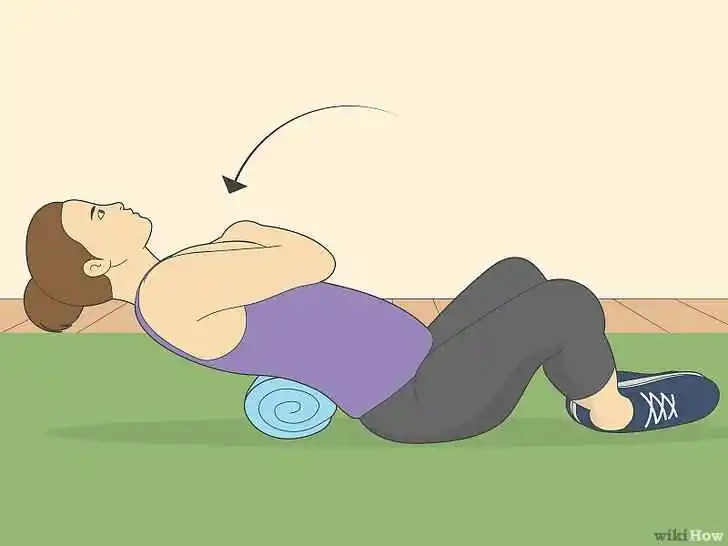
By placing your legs in a butterfly posture, you force proper form by removing the option to use your hip flexors. It is ideal for group training sessions because it can be adjusted in both directions.
Instructions for the exercise:
To begin, lie down with your face up, legs bent to the side, and the soles of your feet together. Now extend your arms above your head. This is where you start. Now sit up straight and roll your body with your midsection. Grab your toes and touch them. The first rep is that. Proceed to the next rep after gradually lowering your back to the beginning position.
The Dead Bug
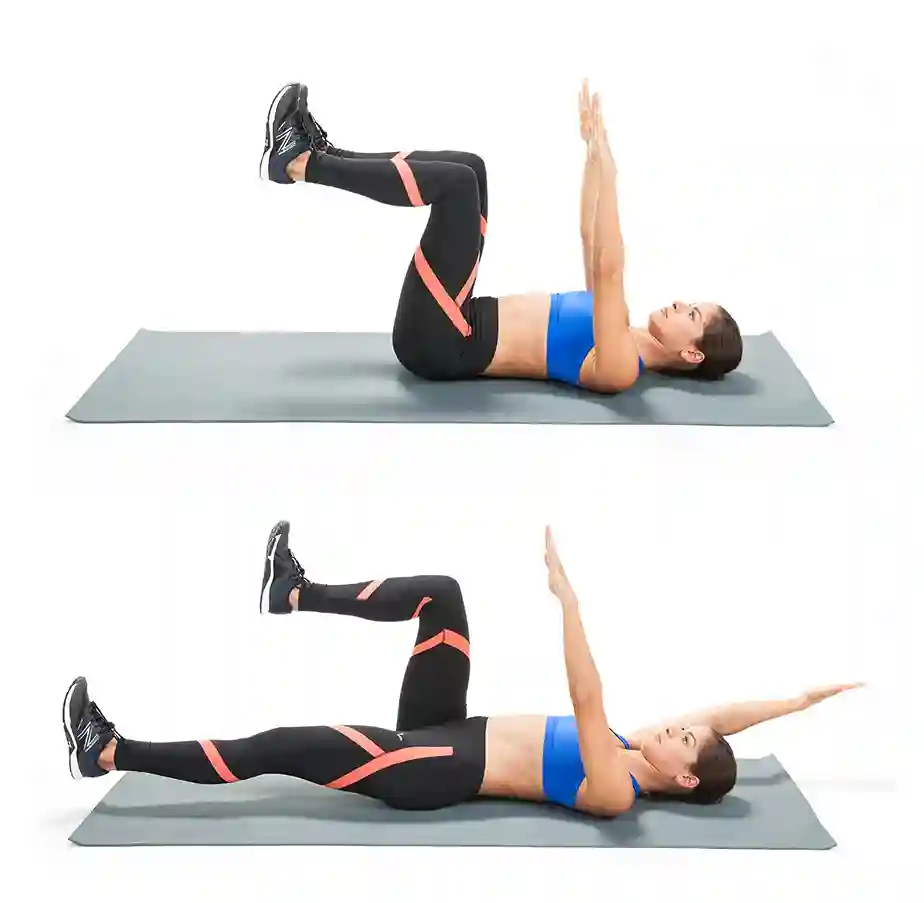
You can connect your mind and core with this stretch. Although you won’t necessarily get a burning feeling, it is great for an all-encompassing ab workout. It’s not always superior. It’s a crucial exercise to build strong, deep core muscles.
Instructions for the exercise:
Begin by lying down with your legs in a tabletop position and your arms reaching up towards the ceiling. Make sure your knees are stacked over your hips and bent 90 degrees. This is where you start. Now, gently extend your right leg straight out while simultaneously lowering your left arm overhead. Make sure they are each a few inches off the floor. With your lower back pressed onto the floor, compress your behind and maintain an active core throughout. Lastly, return your arm and leg to their initial positions. Extending your right arm and left leg, repeat this on the opposite side.
Fundamental Elements of Core Exercise
Focusing on the core muscles: Core workouts should target the rectus abdominis, transverse abdominis, and obliques, among other abdominal muscles.
Including the lower back: Exercises that focus on the erector spinae and other lower back muscles can assist in increasing overall core stability and reduce the risk of injury.
Testing balance: Balance-based core exercises, like the plank or side plank, can help strengthen the core muscles and increase stability.
Including movement: Dynamic exercises that work the core in a more functional, movement-based manner, such as the Russian twist or bicycle crunch, can aid in engaging numerous muscle groups.
Using the right form is crucial for core workouts since improper form can cause injury and reduce the exercise’s effectiveness. Throughout the exercise, it’s critical to keep your spine neutral and use your abdominal muscles.
Considerations when performing core exercises
Any fitness program must include core exercises since they help to tone and strengthen the muscles in the hip, lower back, and abdomen. When doing core workouts, it’s crucial to exercise caution and prevent damage. When performing core workouts, have the following in mind:
Start slowly: As your strength and endurance build, progressively up the challenge level from a few simple workouts.
Maintaining correct form is essential to avoiding injuries and maximizing the benefits of your workouts. When performing exercises like planks, bridges, and crunches, make sure to contract your abdominal muscles and maintain a straight back.
Don’t overdo it: Recognize your boundaries and avoid exerting yourself excessively. Excessive use of your core muscles might cause strain or injury.
Be cautious when performing high-impact exercises: If you have a history of joint pain or injury, you should avoid some core exercises, such as plyometrics or jumping exercises, as they can cause significant joint stress.
Warm up before beginning: It’s crucial to warm up before beginning any core exercises, just like with any other workout. Your muscles can be better prepared and your risk of injury decreases with a 5- to 10-minute warm-up that includes dynamic stretching and mild aerobic exercises.
Combine cardio and strength training: You should incorporate both cardio and strength training into your core workout to properly target your core.
Mix things up: Repeating the same core exercises over and over again might cause muscular imbalances and reduce your effectiveness. You can get better results by incorporating a range of exercises that focus on different parts of your core.
Pay attention to your body: halt the activity and take a break if you experience any pain or discomfort. See a physician if the pain doesn’t go away.
Additionally, it’s critical to keep in mind that core workouts are just one component of a healthy lifestyle; for optimal effects, they should be combined with a balanced diet and frequent cardiovascular exercise.
Additionally, it would be recommended to see your physician or physical therapist before starting any core exercises if you have a history of injuries or any special medical conditions.
FAQs
How can I get a better posture and strengthen my core?
Your posture will improve and your core will get stronger if you set aside some time each day for stretches and core exercises. Your abdominal muscles, especially the transverse abdominals, should be the focus of the exercises if you want a strong core. Here are some efficient methods for strengthening your core and enhancing your posture.
Can posture be improved by strengthening the core?
The deep muscles in your back, pelvis, and abdomen are known as postural muscles or core stability muscles. They keep you together like scaffolding or a corset. Having strong core muscles is essential for maintaining proper posture.
How is your core posture exercised?
Additionally, they improve the development of back and core strength and balance, both of which are critical for proper posture. To perform the exercise, get on all fours, elevate your hips, lift your heels, and straighten your legs. Maintain a straight back while using your arm, leg, and abdominal muscles.
Can poor posture result from a weak core?
Four Indications Your Pain Is Coming from a Weak Core
The following are some typical signs of weak core muscles: Bad posture: One of the earliest signs of a damaged or weak core is this. A weak core leads to poor posture, which includes hunched shoulders and an inability to stand or sit up straight.
Can you strengthen your core by walking?
Additionally, walking strengthens your back and core muscles. A person’s gender, age, body mass, level of muscle strength, and whether or not they are walking on an elevation will all affect how much muscular growth they experience.
Which three physical symptoms indicate a weak core?
The Indications
When you run or walk, your lower back hurts.
You often catch yourself slouching or hunching.
To get from a sitting position to a standing one, you frequently rely on your arms.
You find it difficult to walk on uneven ground or balance on one leg.
Constipation or other digestive problems are common for you.
How soon can my core get stronger?
4–8 weeks
However, most people report that they see a change in core strength within 4 to 8 weeks after starting core strengthening exercises. Some even earlier!
Reference
- Posture, Y. B. (2023, January 11). Core Exercises that Strengthen Your Posture. Your Body Posture. https://yourbodyposture.com/core-exercises-that-strengthen-your-posture/
- Hecht, M. (2020, November 19). The 4 main types of posture. Healthline. https://www.healthline.com/health/bone-health/the-4-main-types-of-posture
- Elson, L., MD. (2018, September 6). Understanding and improving core strength. Harvard Health. https://www.health.harvard.edu/blog/understanding-and-improving-core-strength-2018090414662
- Walters, O. (2022, March 7). 11 Benefits of a strong core. Healthline. https://www.healthline.com/health/core-strength-more-important-than-muscular-arms
- Brotherton, E. (2024, November 29). 10 core strengthening exercises for better posture, increased strength, and pelvic floor support. Medium. https://medium.com/@ericbrotherton/10-core-strengthening-exercises-for-better-posture-increased-strength-and-pelvic-floor-support-e74e98b8f691
